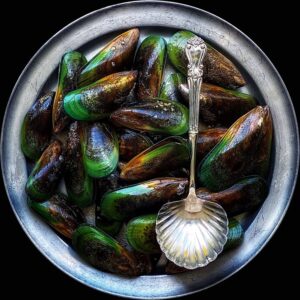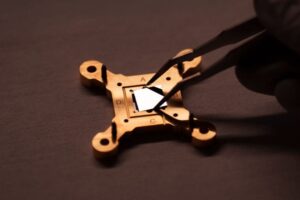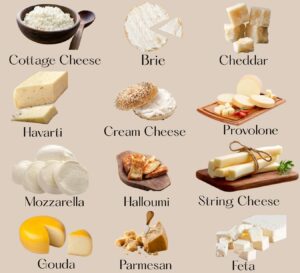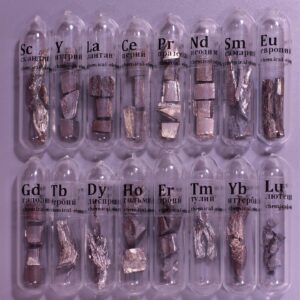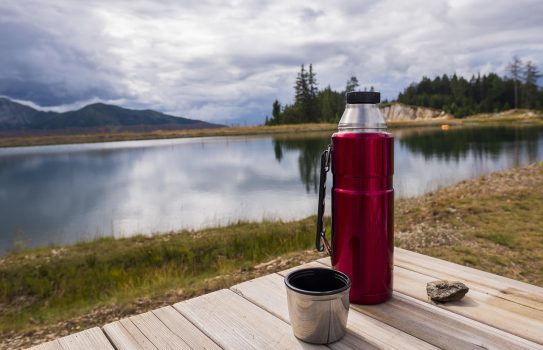 Pin
Pin Most people just grab a thermos, pour in coffee, and move on. But if you’ve ever wondered why your drink stays hot for 10 hours, that’s not luck—it’s smart engineering. How thermos bottles are made is actually way more intense than you’d expect. These aren’t just metal cups with lids. They’re built like tanks with science packed inside, and once you see how they’re made, it’s hard not to respect the process.
These bottles have to survive rough handling, hold pressure, and trap heat (or cold) like a pro. There’s a vacuum between the inner and outer walls, but making that vacuum? That’s a whole operation by itself. It involves high-pressure machines, welding, and multiple rounds of quality control. Miss a single step, and the bottle’s basically useless. That reliable sip of hot coffee during your commute? It comes from a seriously well-orchestrated process behind the scenes. And honestly, once you see the layers of thought that go into it, you’ll never look at your thermos the same way again.
Table of Contents
The Core Structure – What’s Really Inside a Thermos
 Pin
Pin At first glance, a thermos looks pretty basic—just a bottle with a lid. But open it up (or better yet, slice one in half), and you’ll find a seriously smart setup. The magic starts with the double-wall design. There’s an inner bottle and an outer shell, and between them? A vacuum. That empty space is what stops heat from moving in or out. No air, no heat transfer. Simple idea, but crazy effective.
Now, getting that vacuum in there isn’t just a matter of sealing the two layers together. Factories use machines to suck all the air out and then fuse the layers tight so it stays sealed for years. If the seal breaks or even slightly leaks, the whole bottle loses its insulating power. Most high-quality thermoses are made of stainless steel, both for durability and hygiene. The inside is often coated or polished to resist stains and odors.
So when you’re sipping hot tea six hours later, that’s thanks to some serious behind-the-scenes engineering keeping everything just the way you want it.
Turning Raw Steel Into a Bottle – The Forming Process
This part is where it starts to feel like watching an industrial-level magic trick. Every thermos starts out as a flat sheet of stainless steel. That sheet gets cut, rolled, and pressed into a cylinder. But making a smooth, solid bottle from flat metal isn’t as simple as folding paper. Giant machines shape the steel using tons of pressure—literally tons. The inner and outer walls of the thermos are formed separately, and both have to be flawless.
The process includes deep drawing, which stretches the steel into shape without weakening it. If it’s done wrong, the metal can crack, warp, or get too thin in spots. That’s a big problem, especially since one tiny weak point can kill the vacuum seal later on. Once the cylinders are formed, they’re trimmed, polished, and checked for defects. Even slight dents or uneven thickness means starting over.
It’s easy to overlook how thermos bottles are made, but when you see how much force and precision goes into shaping just one part, it’s hard not to be impressed.
Creating the Vacuum Seal – The Heart of the Thermos
This is where the real science kicks in. Everything up to this point has been about shaping the steel, but the vacuum seal is what makes a thermos actually work. After the inner and outer walls are formed, they’re fitted together with extreme precision. There’s only a small gap between them, and that gap has to become a vacuum. Removing the air is a delicate step, and it’s done using industrial-grade vacuum pumps.
The machine sucks out the air, and the space is sealed off permanently. This vacuum stops heat transfer by conduction and convection. That’s how your drink stays the same temperature for hours. If that vacuum doesn’t hold, the thermos turns into a regular bottle—basically useless. So factories run pressure tests to make sure the seal holds under real-life conditions.
Some manufacturers even add a tiny reflective coating to the inner wall, bouncing heat back into the liquid instead of letting it escape. So yeah, it’s not just a metal bottle—it’s engineered like a high-performance insulator built for everyday life.
Insulation and Inner Coating – Keeping Things Fresh
Once the vacuum seal is in place, the focus shifts to performance. The inside of a thermos isn’t just raw steel. Depending on the brand and use case, manufacturers might polish it to a mirror finish or coat it with a special liner. That coating helps prevent flavors from sticking, resists corrosion, and keeps your drinks tasting fresh. If you’ve ever had a thermos that made your coffee taste weird, chances are the inner layer was low quality or damaged.
Some premium bottles use ceramic coatings or food-safe non-stick layers. These materials can handle high heat, acidic drinks, and even carbonated liquids without breaking down. Meanwhile, the outer shell gets its own insulation treatment—sometimes foam, sometimes air layers, depending on design. These extras help block outside temperature from sneaking in.
It’s this mix of vacuum insulation and smart materials that sets a good thermos apart from a cheap one. They’re built to handle extremes without affecting flavor, smell, or safety. And yeah, all of that tech is hiding inside something you toss in your backpack every day.
Adding the Lid
The lid might look like the simplest part, but it’s actually one of the most critical. A good thermos lid does more than just keep liquid from spilling. It has to seal airtight, hold pressure, and in some cases, help with temperature control. That’s why companies put a lot of design effort into it. Some lids use silicone gaskets, others use double-seal mechanisms, and many include safety locks or pressure valves—especially in bottles meant for hot liquids.
There are also thermal lids, which add an extra layer of insulation. And don’t forget usability—many thermos lids double as cups, or include a built-in straw or spout. These parts have to be both durable and heat-resistant, often made from BPA-free plastic or stainless steel. They also need to be easy to take apart and clean, because any leftover residue can affect taste and hygiene.
So while it may look like a simple screw-on cap, the lid plays a major role in how well your thermos performs—and whether it’s actually enjoyable to use daily.
Painting, Branding, and That “Finished” Look
After all the engineering and testing, a thermos still doesn’t look ready for store shelves. That final polished look comes from a whole other set of processes—mostly about appearance and feel. This is where brands make their mark, literally. The outer shell gets powder-coated, painted, or even wrapped in textured finishes for grip. That layer isn’t just for looks—it also protects the metal underneath from scratches, rust, and wear.
Some companies laser-etch their logos or add unique designs using heat-resistant inks. Matte, glossy, metallic—every finish goes through durability tests to make sure it doesn’t peel, chip, or fade. It also has to handle dishwashers, drops, and whatever rough treatment comes from everyday use. Even color choice matters. Some darker coatings absorb more heat in sunlight, so outdoor brands often opt for lighter shades.
So that slick black thermos or shiny pastel bottle you toss into your bag? It’s not just stylish. It’s the result of careful material choices, heat treatments, and branding strategies designed to make you reach for it again and again.
Quality Checks – Why Not All Thermos Bottles Are Equal
Here’s the part that separates the decent thermoses from the ones that leak or lose heat in a couple hours—quality control. After assembly, every batch goes through a series of tests. Some brands do random spot checks, while others inspect every single unit. The first check? Vacuum integrity. Machines test whether the vacuum layer between the walls is still sealed and holding. A tiny leak, and the bottle’s insulation is ruined.
Next up are pressure and temperature tests. Factories fill the bottles with boiling water or ice-cold water, seal them, and measure how much heat is lost over time. Some tests run for 6, 12, or even 24 hours. They also simulate drops, twists, and repeated lid removals to make sure the bottle won’t fail with daily use. Any bottle that can’t hold up gets scrapped or recycled.
This process matters more than people think. A thermos that hasn’t been tested properly might look perfect but perform terribly. That’s why trusted brands invest so heavily in this phase—it’s what protects their reputation and your coffee.
Sustainability and Waste – The Eco Side of Thermos Production
Most people think of thermos bottles as eco-friendly because they replace single-use cups and bottles. And that’s true—but only part of the story. How thermos bottles are made also affects the environment. Top manufacturers know this, and many have started using recycled stainless steel, water-based paints, and more efficient machinery to reduce waste during production. The leftover steel scraps from cutting and pressing? Usually melted down and reused.
Some brands have entire recycling loops inside their factories, turning rejected parts into raw materials again. Energy use is another big issue. Vacuum sealing and metal forming require serious heat and power, so companies are shifting toward solar-powered systems or energy recovery setups to stay efficient.
Packaging is changing too. More companies are ditching plastic wrap in favor of recyclable cardboard or biodegradable packing materials. So when you buy a thermos from a responsible brand, you’re not just getting something that lasts years—you’re supporting cleaner production methods behind the scenes. And in today’s world, that kind of transparency actually matters more than ever.
The Final Product – How It Reaches You
After all the manufacturing, testing, and final touches, the thermos is ready for the market. But before it ends up on store shelves or in your online cart, there’s one more process—distribution. That’s when the thermos enters the logistics pipeline. Typically, it’s boxed in protective packaging and shipped to warehouses, then dispersed to retailers or directly to customers. This step may seem less interesting than making the bottle itself, but it’s a vital part of getting a high-quality product to you.
The last step is where the thermos becomes part of your daily life. Whether it’s waiting for you at your favorite café or being shipped straight to your door, it’s now ready to perform as designed. And while you might not think about all the stages it went through, each one adds value. That thermos you love to carry around? It’s a product of hundreds of hours of work, testing, and fine-tuning to ensure it performs exactly as it should, day after day.
FAQs
A well-made thermos can keep drinks hot or cold for anywhere between 6 to 12 hours, depending on the brand, quality, and insulation technology used. Higher-end models, especially those with advanced vacuum insulation, can keep your beverage at the perfect temperature for even longer.
The shiny finish on some thermoses comes from a polished stainless steel exterior, giving it a sleek, reflective surface. Matte finishes are typically used for grip, and to give the thermos a modern, subdued look. Both finishes serve to protect the bottle’s surface, with the matte finish often being better at hiding scratches.
It depends on the model and materials. Many thermos bottles are dishwasher safe, but some manufacturers recommend hand washing to preserve the integrity of the vacuum seal and coatings. Always check the product instructions for care recommendations to ensure long-lasting performance.
Thermos bottles are generally made from stainless steel, known for its durability, rust resistance, and ability to retain temperature. Some also feature ceramic or non-stick coatings on the interior for easier cleaning and to prevent odors or flavors from sticking.
Yes, thermos bottles are generally considered eco-friendly as they help reduce the need for single-use plastic bottles and cups. Many companies are also making strides in using sustainable materials, such as recycled stainless steel, and reducing waste during manufacturing, making them a more environmentally responsible choice.













